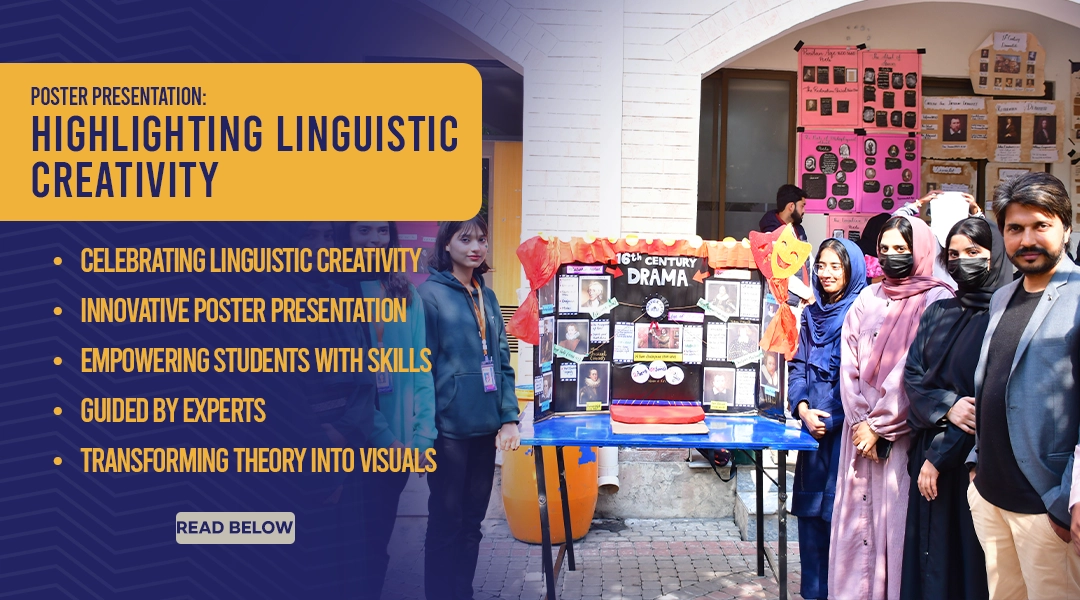Bringing Language to Life: Celebrating Creativity through Posters
The Power of Words and Visuals defines the essence of effective communication and artistic expression. Recognizing this, the Department of Languages at The University of Chenab recently organized a vibrant Poster Presentation Activity that combined linguistic understanding with visual creativity. Above all, the event provided a platform for students to explore language in interactive, imaginative ways.
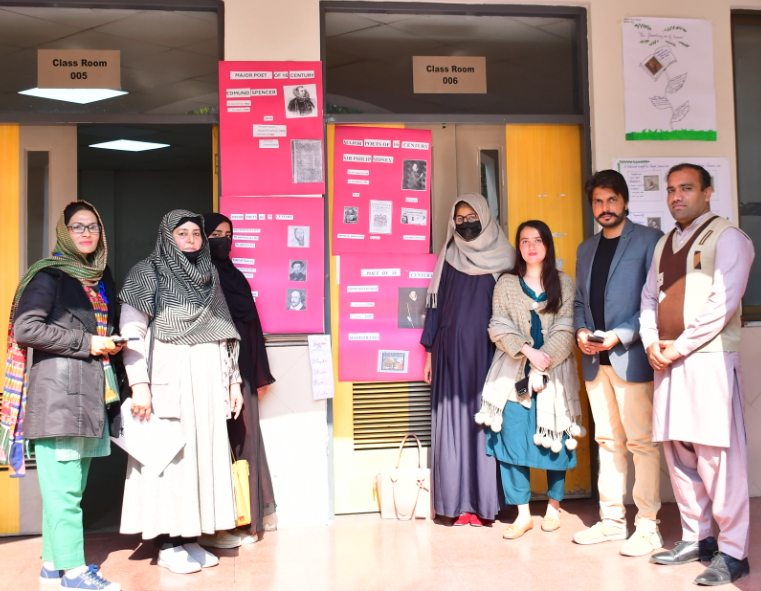
If language is the tool of thought, then visuals enhance its impact. The event served this very purpose. Students showcased posters that reflected thematic depth, vocabulary awareness, cultural relevance, and the ability to communicate powerfully through imagery and text. The Power of Words and Visuals not only inspired young minds, but also transformed language learning into an engaging and impactful journey.
Prominent Contributors to the Event
The Department of Languages at The University of Chenab, under the academic guidance of Prof. Dr. Nazir Ahmad Malik, Chairperson, and the unwavering support of Mr. Muhammad Adnan and Prof. Dr. Akbar Khan, both esteemed lecturers in the department, organized this vibrant poster presentation. Their expertise and mentorship shaped the event into a platform of excellence and creativity.
Objectives of the Poster Presentation: Promoting The Power of Words and Visuals
The core aim was to help students discover The Power of Words and Visuals in expressing thoughts, cultures, and ideas. Accordingly, the department designed the activity to:
- Strengthen students’ grasp of vocabulary and grammar in meaningful contexts.
- Improve visual presentation skills through artistic creativity.
- Encourage the integration of language with design thinking.
- Boost students’ confidence in public communication and academic presentation.
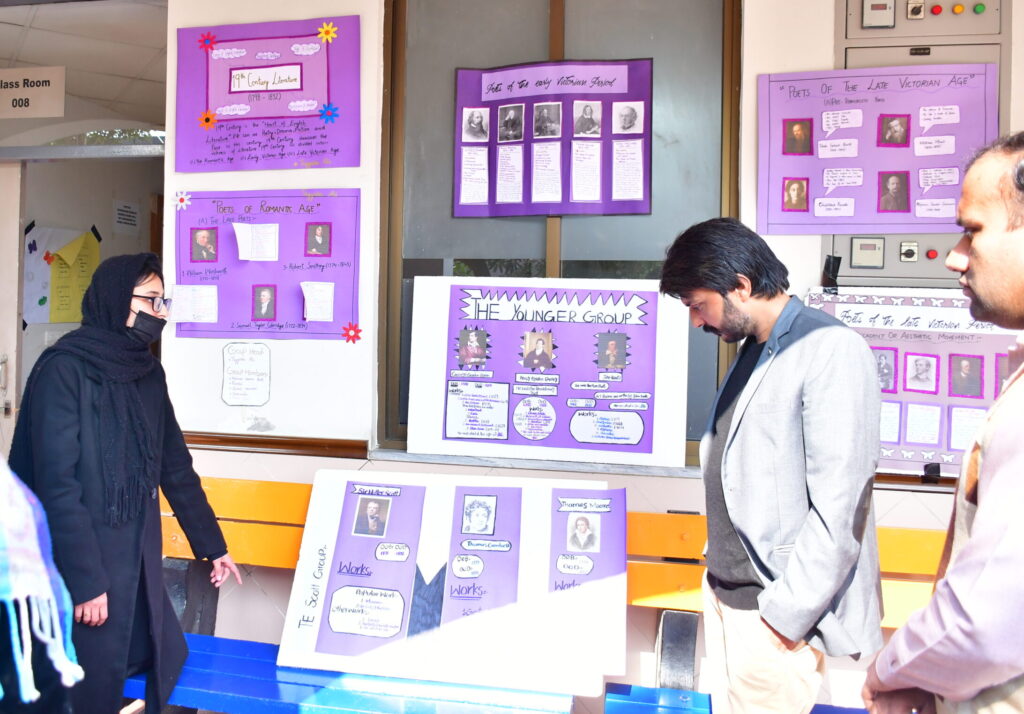
Encouraging Thoughtful Communication
As I have said, communication is not only verbal—it is also visual and contextual. Through their posters, students highlighted current issues, celebrated cultural narratives, and constructed powerful messages. For instance, some posters depicted environmental awareness through poetic captions and vibrant visuals. Others showcased social harmony using linguistic tools such as metaphors, similes, and rhetorical questions.
Event Highlights: A Showcase of Ideas and Aesthetics
Creative Poster Displays: From Concept to Canvas
With this purpose in mind, students worked in groups to conceptualize and present their ideas artistically. They chose topics ranging from global peace and climate change to education, literature, and language humor. What’s more, the balance between written language and visuals demonstrated both linguistic proficiency and design innovation.
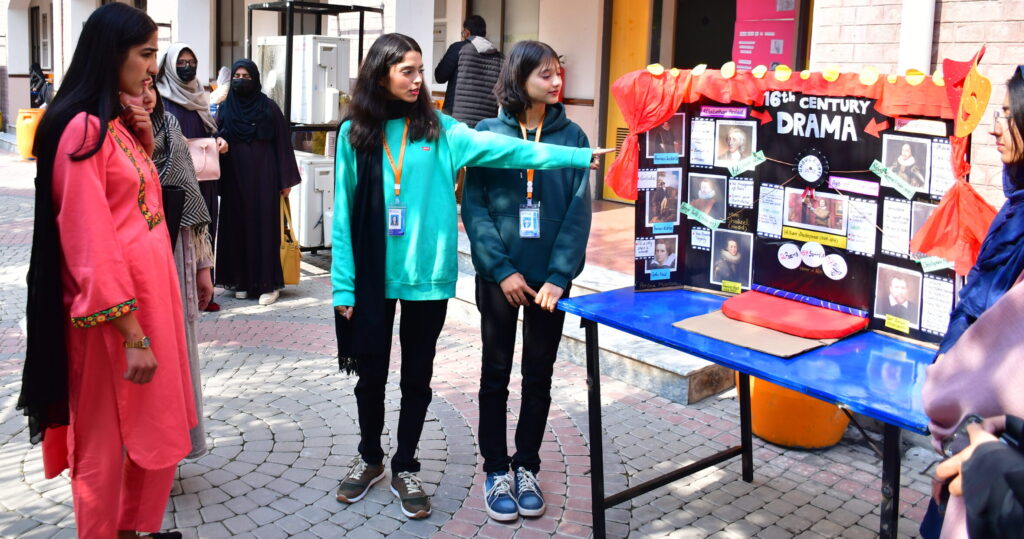
Each poster had a story. As can be seen, students applied idiomatic expressions, literary devices, and thematic phrases. Together with compelling illustrations and color schemes, the posters truly embodied The Power of Words and Visuals.
Interactive Judging and Peer Feedback
The presentation sessions took place in The University of Chenab‘s main corridor, where faculty members, language experts, and students evaluated the posters. Judging criteria included creativity, linguistic accuracy, theme relevance, and visual aesthetics. Equally important, students also received feedback from peers, making the event a two-way learning process.
Not only did students gain knowledge, but they also built teamwork, critical thinking, and artistic communication skills. Certainly, this reflects the university’s approach to holistic education.
Student Perspectives: Learning Beyond the Classroom
Expressions of Language, Creativity, and Identity
As has been noted, language shapes identity. The students brought their unique perspectives to life through visual metaphors and powerful taglines. For example, a team presented a poster on women empowerment with the caption “Voices Unmuted,” creatively blending typography with symbolism. Another team focused on cross-cultural communication using quotes in multiple languages.
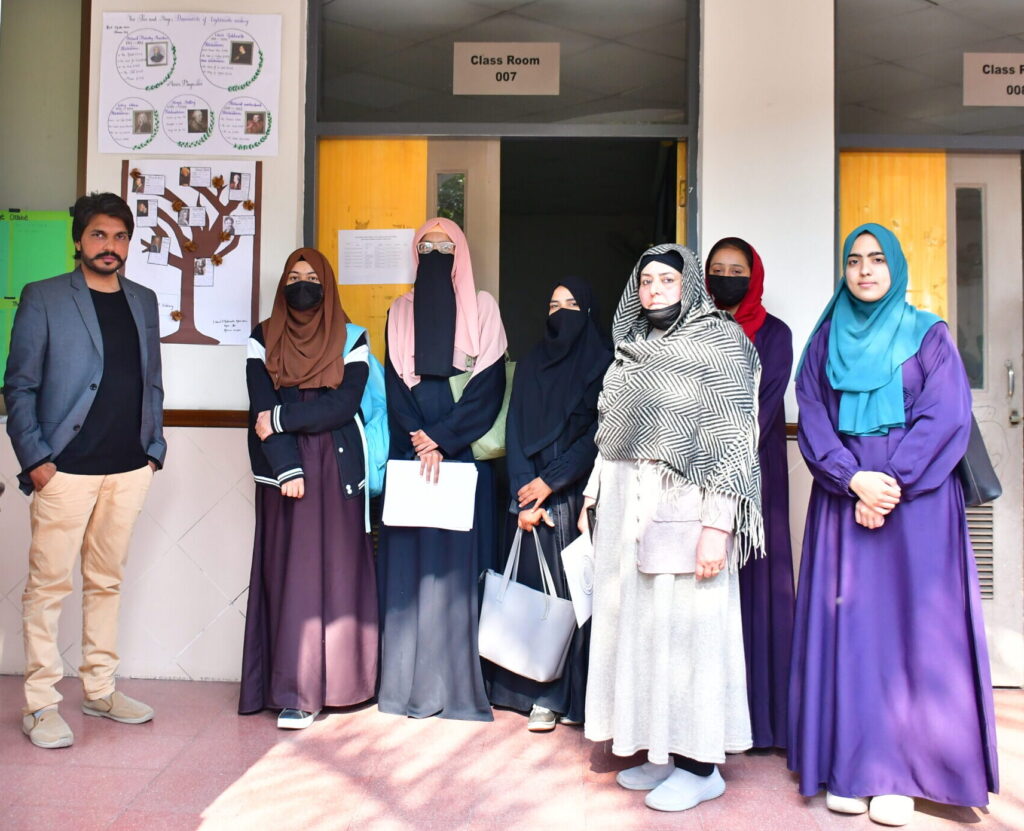
These experiences not only strengthened language skills but also nurtured empathy, awareness, and global understanding. In fact, this exercise turned abstract language theories into tangible realities.
From Theory to Practice: A Linguistic Laboratory

By applying what they learned in class—sentence structure, narrative techniques, persuasive writing—students translated theory into meaningful projects. In the final analysis, The Power of Words and Visuals helped bridge the gap between theoretical knowledge and real-world usage.
Additionally, students gained the ability to convey ideas effectively—a skill essential in academic, personal, and professional life.
Faculty Reflections: Guiding Innovation in Language Learning
Language instructors observed not just linguistic growth, but also students’ ability to innovate. One faculty member noted, “This was more than a poster display. It was an exhibition of minds—thinking, creating, expressing.”
Compared to traditional exams or written assignments, the poster activity allowed freedom of interpretation. Another key point is that this creative outlet encouraged students who are typically shy in verbal discussions to express themselves confidently.

Why The University of Chenab? A Leader in Innovative Language Education
Empowering Students through Experiential Learning
The University of Chenab stands out because of its forward-thinking curriculum and inclusive learning environment. By emphasizing The Power of Words and Visuals, the institution ensures that language learning becomes immersive, dynamic, and practical.
Furthermore, the Department of Languages continually introduces activities that integrate literature, culture, and digital storytelling. These include:
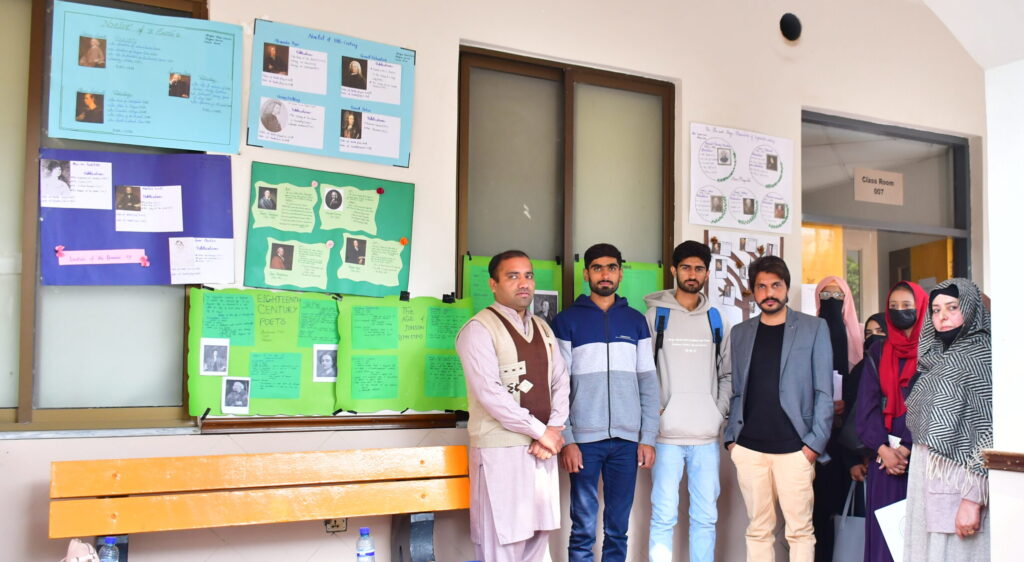
- Theatrical Performances and Debates: For enhancing spoken expression and argumentation.
- Story Mapping and Digital Narratives: For combining technology with language.
- Creative Writing Workshops: To polish narrative and descriptive skills.
Faculty Mentorship and Modern Pedagogy
Under the guidance of experienced educators, students develop linguistic competence through progressive strategies. Unlike conventional models, UChenab focuses on applied language practices. As a result, learners emerge as effective communicators ready for the global stage.
Moreover, interdisciplinary learning is strongly encouraged. Students are invited to incorporate elements from art, sociology, and media into language projects. The Power of Words and Visuals is therefore not just a theme—but a teaching philosophy.
Building Bridges with Industry and Society
In order to ensure real-world readiness, the Department of Languages also connects students with local media professionals, educators, and content creators. These partnerships help students learn how communication works in journalism, marketing, and creative industries. For this reason, UChenab graduates stand out in both academia and the workplace.
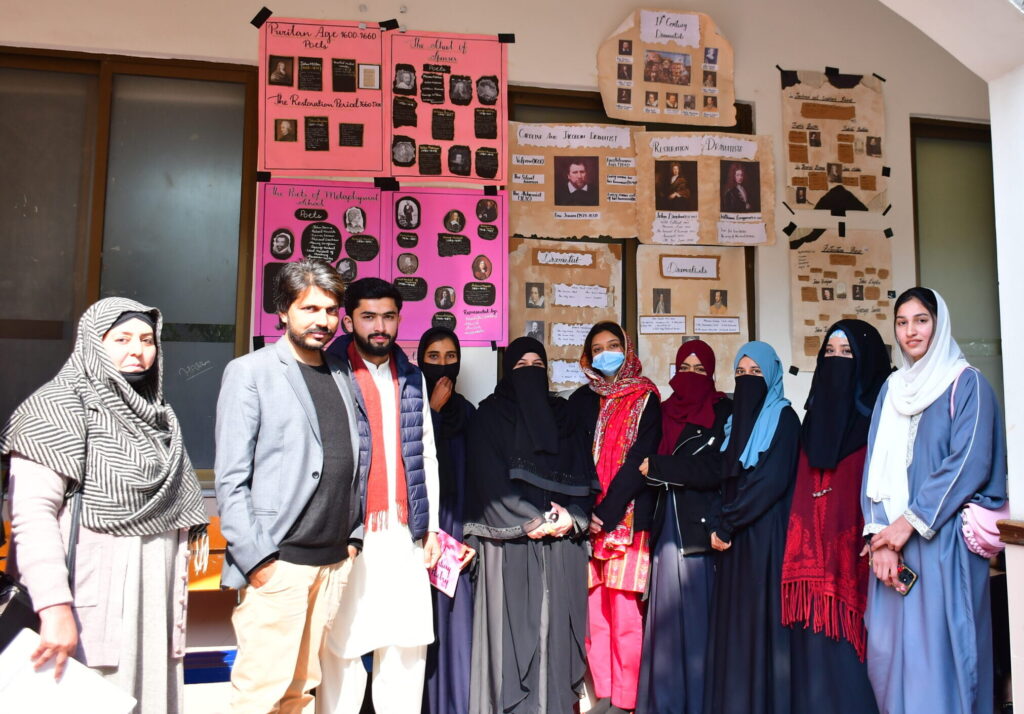
The Power of Words and Visuals in Shaping Future Communicators
All things considered, the Poster Presentation organized by the Department of Languages successfully celebrated linguistic creativity and visual storytelling. By engaging students in meaningful, innovative work, the university reaffirmed its dedication to holistic and experiential education. The Power of Words and Visuals echoes throughout the activity—from concept and collaboration to communication and creativity. It will continue to shape the way students learn, express, and lead. With this intention, The University of Chenab remains committed to producing thinkers, creators, and communicators ready to make a difference—one word and one visual at a time.

